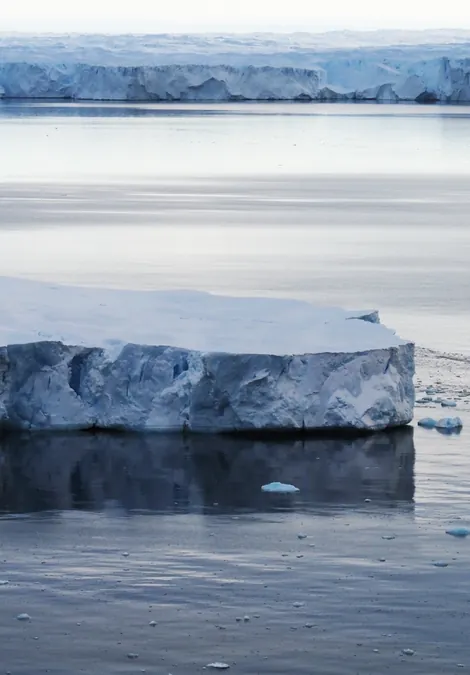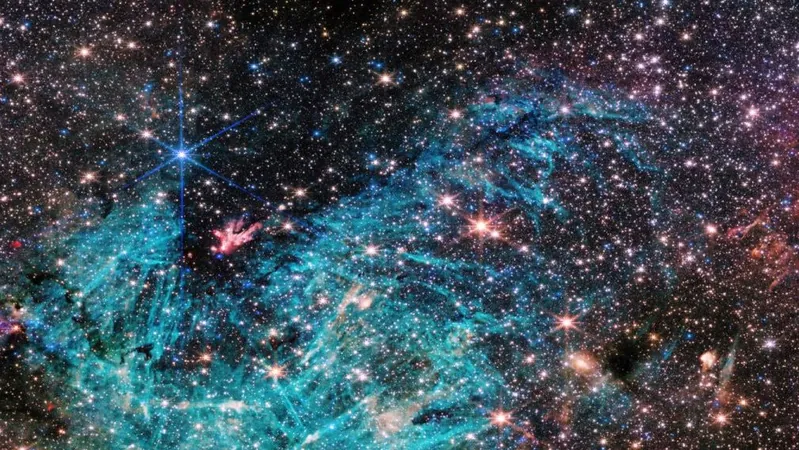
Unveiling Antarctica's Ancient Secrets: A Game Changer for Climate Predictions!
2025-03-31
Author: Siti
Groundbreaking Insights into Antarctica's Subglacial Rivers
A groundbreaking study has shed light on the intricate past of Antarctica’s subglacial rivers, offering crucial insights that could revolutionize how climate scientists forecast the impacts of global warming. This research delves into the long-term evolution of the drainage systems beneath glaciers, providing a potentially pivotal key to understanding future ice melt in the region.
Study Overview and Importance
The study, titled "The Past, Present, and Future Evolution of the Aurora Subglacial Basin's Subglacial Drainage System," is published in *Nature Communications*. Spearheaded by researchers from the University of Waterloo's Faculty of Environment, the project focused on the Aurora Subglacial Basin in East Antarctica, a geologically critical area located below sea level, which is particularly susceptible to instability and rapid ice loss.
Dynamic Changes in Subglacial Water Pathways
By examining the movement of subglacial water from 34 million years ago to projections 75 years into the future, the team discovered that these water pathways are not static but exhibit dynamic changes over time. If such melting continues unchecked, scientists warn that melting in the Aurora Subglacial Basin alone could lead to a staggering four-meter rise in global sea levels.
Integrating Subglacial Hydrology into Climate Models
Ph.D. candidate Anna-Mireilla Hayden, the study's lead author, emphasized the need for integrating insights about subglacial rivers into climate models. “Many existing studies utilize historical data to predict future outcomes, but neglecting the subglacial hydrology gives us an incomplete picture,” she explained. Including this information, Hayden argues, could significantly reduce the uncertainties associated with sea level rise forecasts.
Impact on Global Sea Levels
As the research indicates, the shifting locations of drainage points could disrupt water circulation beneath glaciers and intensify weaknesses in ice flows that connect land to ocean. This disruption could accelerate ice flow rates and contribute to an even more drastic rise in sea levels than previously estimated.
Call to Action
Dr. Christine Dow, a prominent figure in glacial hydrology and a co-author of the study, echoed these concerns. "For coastal communities worldwide, it’s imperative that we leverage every piece of information available to anticipate and mitigate the impacts of rising seas," she asserted. While the study does not specify exact figures for future sea level rise, it highlights the substantial and fluctuating role of subglacial water in ice dynamics over extensive historical periods.
A Wake-up Call for Climate Action
The implications of these findings are vast, signaling a need for urgent action in understanding and addressing climate change. With Antarctica's ice sheets facing unprecedented threats, scientists worldwide must prioritize the integration of subglacial hydrology into their research to safeguard vulnerable coastal regions.
This pivotal study not only enhances our understanding of Antarctic dynamics but also serves as a wake-up call for the global community—changes beneath the ice could very well determine the fate of coastal cities around the world.



 Brasil (PT)
Brasil (PT)
 Canada (EN)
Canada (EN)
 Chile (ES)
Chile (ES)
 Česko (CS)
Česko (CS)
 대한민국 (KO)
대한민국 (KO)
 España (ES)
España (ES)
 France (FR)
France (FR)
 Hong Kong (EN)
Hong Kong (EN)
 Italia (IT)
Italia (IT)
 日本 (JA)
日本 (JA)
 Magyarország (HU)
Magyarország (HU)
 Norge (NO)
Norge (NO)
 Polska (PL)
Polska (PL)
 Schweiz (DE)
Schweiz (DE)
 Singapore (EN)
Singapore (EN)
 Sverige (SV)
Sverige (SV)
 Suomi (FI)
Suomi (FI)
 Türkiye (TR)
Türkiye (TR)
 الإمارات العربية المتحدة (AR)
الإمارات العربية المتحدة (AR)